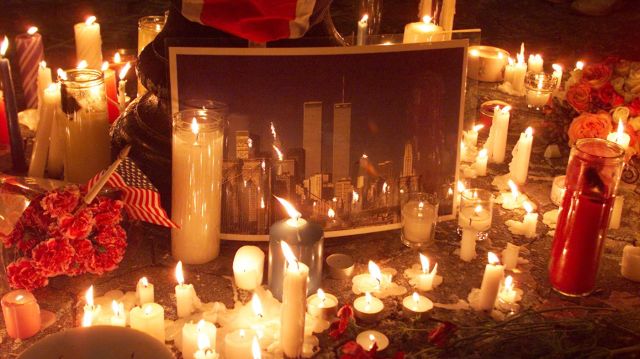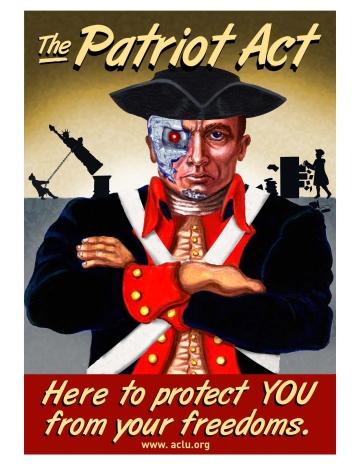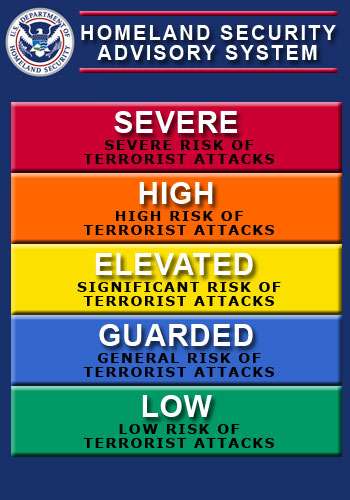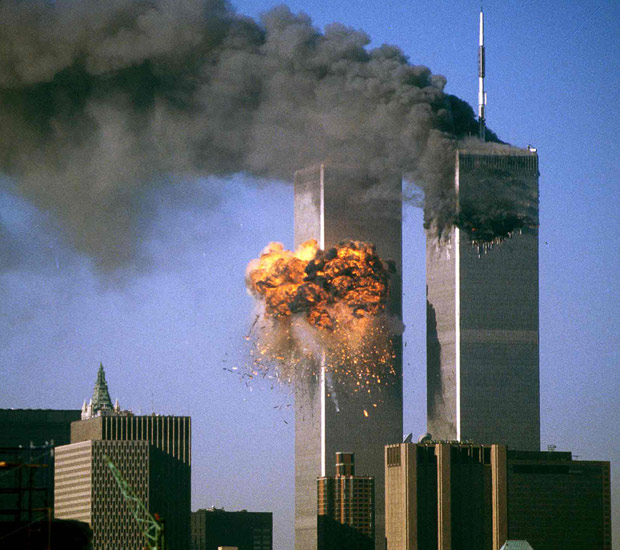Georgie
Willy?
Will
What?
Georgie
`Daddy died.
Will
I know.
Georgie
Bad men killed him.
~Jim Dalglish, Unsafe, Act I, Scene i
Grief and Loss in the Wake of a Tragedy
September 11th lives on in our mind like a dull ache that won’t heal. Time has passed, but the realities that the attacks have left us with still linger. With the critical distance of 15 years, most of us can safely navigate through the day without even thinking about 9/11.
Thankfully, I did not personally know anyone who died in the terror attacks of 9/11, and yet the impact of the day resonated with me. But what of those who had to endure the unimaginable in the days and weeks after September 11th?
Will, Lisa, and Georgie all lost someone integral to their lives during 9/11. With only about 2 years between this loss and the events of Unsafe, these character’s pain is in many ways still very near and woven into the fabric of their daily lives.
Seeing the psychological scars these people carry through Jim Dalglish’s play got me to questioning the nature of grief and loss– especially in the wake of the cataclysmic attacks of September 11th.
How 9/11 Invited us All to Grieve

The vast majority of American citizens were nowhere near ground zero, nor were they impacted directly by the attacks. The odds of knowing one of the roughly 3,000 casualties of the World Trade Center attacks is staggeringly odd when taking the entire population of the country into account.
And yet, subsequent September 11th, millions across the country join to observe a moment of silence. Others still attend candlelight vigils commemorating the victims.
So what has caused this high level of communal grief?
Unlike other national tragedies– 9/11 was different in that we were immediately bombarded with the horrific images of the attacks via the 24-hour news cycle. The United States received news of the bombing of Pearl Harbor slowly, and mostly via radio signal– so imagination played more of a role in understanding that tragedy. News reports of Kennedy’s assassination trickled in, but by the the time it reached the American people, the event was through. The Challenger explosion was telecast live, but there was nothing left of the victims in the space shuttle for us to mourn.
Instead, within two minutes of the first plane colliding with the North Tower, local New York City news station WNYW broadcast a ground-level live feed of the burning building. These images then quickly spread to other newscasts until nearly every television set in the country was receiving images of the attacks, and the subsequent collision and collapsing of the buildings was shown live on television for all to see.
It all happened simultaneously– in real time.
(For those interested, a detailed minute-by-minute timeline of the events of September 11th can be viewed HERE.)
So as a country, we were stricken. I remember sitting in my friend’s dorm room at Butler University in stunned silence for hours as we watched CNN talking heads dissect and analyze the events, piece together the narrative, and hypothesize about the things to come. And this was all because it was both on a scale previously unimaginable (we were, after all, the invincible America), but the events and aftermath were transmitted to us in such an immediate and constant manner.
We grieved, and we grieved together.
Defining Grief
So what is grief?
Swiss psychiatrist Elizabeth Kubler-Ross, in her 1969 book On Death and Dying outlines the longest standing model for navigating the rocky waters of grief. According to Kubler-Ross, individuals having recently experienced a loss often undergo five emotional stages: Denial, anger, bargaining, depression, and acceptance.
 While the Kubler-Ross Model was helpful in illustrating some of the behaviors a grieving individual could exhibit, over the past several years, scientists and other psychologists have criticized the model as a misleading and over-simplification of the complicated emotions that accompany bereavement.
While the Kubler-Ross Model was helpful in illustrating some of the behaviors a grieving individual could exhibit, over the past several years, scientists and other psychologists have criticized the model as a misleading and over-simplification of the complicated emotions that accompany bereavement.
For instance, Dr. Sidney Zisook has devoted his career to defining the varying levels of grief. He indicates that there are four major components to grief, depending on the individual and the specific circumstances of the incident that triggers the grief:
1. Separation Distress: this is a soup of feelings like sadness, anxiety, pain, helplessness, anger, shame, yearning, loneliness, etc
2. Traumatic Distress: this includes states of disbelief and shock, intrusions, and efforts to avoid intrusions and the spike of emotions they produce
3. Guilt, remorse, and regrets
4. Social withdrawal
Zisook further outlines two different types of grief: acute and prolonged.
Acute grief: this is a transient, yet powerfully painful state that includes the aforementioned components. As the grieving process continues over time, other things start becoming mixed in, including a) positive emotions like warmth and joy in remembering, or a sense of relief; b) acceptance, forgiveness, understanding, and compassion; and c) meaning-making about the loss and circumstances.
Prolonged Grief: this is when a person becomes emotionally paralyzed by grief for a very long period of time. They experience the components of grief, but instead of the positive thoughts and feelings emerging, they often experience:
-Strong fear of painful emotions and the possibility of “losing control”
-In bereavement, fear of forgetting the person or betraying them by moving on
-Strong belief that they will “never be the same”
-Excessive guilt or anger
-Persistent sense of disbelief
-Moral indignation
-Rumination and a commitment to avoidance
Grief and Loss in Unsafe
Unlike the majority of America, the characters in Unsafe were directly affected by the terror attacks. In the two years between 9/11 and the events of the play, they’ve had time to linger in this loss and wrestle with it in their own way: Lisa frequently listens to the last phone message of her husband and remembers the serene trip that he proposed shortly before the planes hit. Will has descended into a cycle of destructive behavior and dangerous decisions that hounds him. These are real people sifting through the emotional wreckage left when the planes leveled the World Trade Centers.
What punches you in the gut about Dalglish’s play is how the characters feel remarkably real as they grapple both with the danger and circumstances of the play; but with the past they have yet to truly come to grips with. Will and Lisa reside soundly in a state of prolonged grief where they are trying to find ways to emerge from the long, dark tunnel of their loss.
What makes this pay so vital today is the tragic humanity it shows. As Will, Georgie, and Lisa, work through their own grief, they invite us to revisit the grief we all felt in the aftermath of September 11th, 2001. Grieving is working through loss, and while we may not have lost a loved one during the attacks or cleanup and rescue process; the entire country still worked through loss of another kind. The loss of safety, the loss of security, and the loss of innocence.
All things worth grieving over.

~Tyler J. Monroe, dramaturg





